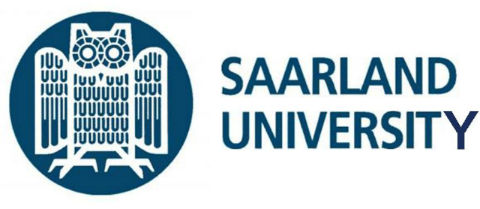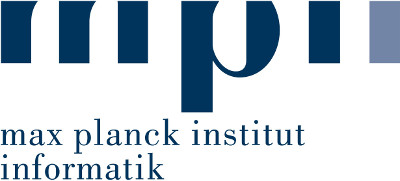Publications
A Client-Server Architecture for Real-time View-Dependend Streaming of
Free-Viewpoint Video (Inproceeding)
Free-Viewpoint Video (Inproceeding)
3DTV Conference 2017 (3DTV-CON), 2017.
(Jonas Scheer, Carlos Fernández de Tejada Quemada, Dr. Oliver Grau)
Learning to Select Long Track Features for Structure-From-Motion & Visual SLAM
(Inproceeding)
(Inproceeding)
German Conference on Pattern Recognition (GCPR), 2016.
(Jonas Scheer, Dr. Mario Fritz, Dr. Oliver Grau)
Masterthesis
Saarland University (in cooperation with Max-Planck Institute)
Title: A Learning-Based Approach for Efficient Visual SLAM
Supervisors: Dr. Mario Fritz (MPII) & Dr. Oliver Grau (IVCI)
Visual SLAM (vSLAM) and structure from motion (SfM) are well-established techniques. However, facilitating them
on mobile devices brings the problem of power consumption and battery drain. For this reason, making the
processing steps of SfM/SLAM less computationally expensive, is still of big interest.
The first step of each SfM or vSLAM pipeline is feature extraction. To improve the following processing steps for SfM, Hartmann et al.[1] trained a classifier to filter out features, which are unlikely to have a match in another image. Nev- ertheless, this classifier is not optimized for vSLAM, but 2D feature matching.
The purpose of this work is to investigate the limits of the classifier created by Hartmann et al. We create a feature score that achieves the same matching performance, but is easier to compute. Furthermore, we train an own classifier, better suited for vSLAM. A random forest is trained to keep features that are part of a valid 3D reconstruction and have a long track length. Thus, our clas- sifier is able to hand over fewer features to the subsequent SLAM/SfM pipeline but does not degrade tracking accuracy. Additionally, our classifier decreases the number of outliers within a 3D reconstruction. We compare our classifier with the one created by Hartmann et al. as well as a feature selection by in- creasing the DoG threshold for sift features. In particular, we demonstrate that our method is able to generate a 3D reconstruction with tracked camera poses, by approximately using 50% fewer features than the baseline methods.
The first step of each SfM or vSLAM pipeline is feature extraction. To improve the following processing steps for SfM, Hartmann et al.[1] trained a classifier to filter out features, which are unlikely to have a match in another image. Nev- ertheless, this classifier is not optimized for vSLAM, but 2D feature matching.
The purpose of this work is to investigate the limits of the classifier created by Hartmann et al. We create a feature score that achieves the same matching performance, but is easier to compute. Furthermore, we train an own classifier, better suited for vSLAM. A random forest is trained to keep features that are part of a valid 3D reconstruction and have a long track length. Thus, our clas- sifier is able to hand over fewer features to the subsequent SLAM/SfM pipeline but does not degrade tracking accuracy. Additionally, our classifier decreases the number of outliers within a 3D reconstruction. We compare our classifier with the one created by Hartmann et al. as well as a feature selection by in- creasing the DoG threshold for sift features. In particular, we demonstrate that our method is able to generate a 3D reconstruction with tracked camera poses, by approximately using 50% fewer features than the baseline methods.
Bachelorthesis
Saarland University (in cooperation with German Research Center for Artificial Intelligence)
Title: Toolkit zur verzerrungsfreien Projektion auf beliebigen
Oberflächen mittels mobiler Projektoren und Tiefenkameras
Oberflächen mittels mobiler Projektoren und Tiefenkameras
(Toolkit for Augmenting Arbitrary Surfaces using Mobile Projection and Depth Camera)
Supervisor: Markus Löchtefeld (DFKI)
(english version below)
Projektoren werden immer kleiner und sind heute bereits so klein, dass sie Platz in einem Smartphone finden. Dasselbe gilt für Tiefensensoren, wie man sie beispielswei- se in der Microsoft-Kinect findet. Die Projektion mittels Mobilgerä̈t bringt jedoch den Nachteil mit sich, dass die Projektion verzerrt dargestellt wird, sobald Projektionsflaäche und Projektor nicht perfekt zueinander ausgerichtet sind. Zudem ist nur das Projizieren auf flache Oberflächen möglich, da sonst ebenfalls die Projektion verzerrt wird.
Diese Arbeit befasst sich mit dem automatischen Entzerren einer Projektion mithilfe eines Tiefensensors, wobei die Oberfläche, auf die projiziert wird, eine voöllig beliebi- ge Form haben darf. Ä̈ndert sich wä̈hrend dem Projizieren die Oberflaäche soll sich die Projektion automatisch anpassen, sodass stets ein unverzerrtes Bild entsteht.
English version:
Projectors are continuing getting smaller and can even be integrated into smartphones. Similar observations can be made for 3D sensors, such that you can use them within you living room as the Microsoft-Kinect. However, projectors which are not perfectly aligned to the projection surface suffer from a distorted projection. Furthermore, only planar surfaces are allowed as projection surfaces, otherwise the projection is distored.
This work deals with undistorting a projection with the help of a microsoft kinect. Additionally, the projection surface is not constrained to be planar and has not to be static. By means of the kinect, the shape of the projection surface is detected and the projection is undistorted in real-time.
Projektoren werden immer kleiner und sind heute bereits so klein, dass sie Platz in einem Smartphone finden. Dasselbe gilt für Tiefensensoren, wie man sie beispielswei- se in der Microsoft-Kinect findet. Die Projektion mittels Mobilgerä̈t bringt jedoch den Nachteil mit sich, dass die Projektion verzerrt dargestellt wird, sobald Projektionsflaäche und Projektor nicht perfekt zueinander ausgerichtet sind. Zudem ist nur das Projizieren auf flache Oberflächen möglich, da sonst ebenfalls die Projektion verzerrt wird.
Diese Arbeit befasst sich mit dem automatischen Entzerren einer Projektion mithilfe eines Tiefensensors, wobei die Oberfläche, auf die projiziert wird, eine voöllig beliebi- ge Form haben darf. Ä̈ndert sich wä̈hrend dem Projizieren die Oberflaäche soll sich die Projektion automatisch anpassen, sodass stets ein unverzerrtes Bild entsteht.
English version:
Projectors are continuing getting smaller and can even be integrated into smartphones. Similar observations can be made for 3D sensors, such that you can use them within you living room as the Microsoft-Kinect. However, projectors which are not perfectly aligned to the projection surface suffer from a distorted projection. Furthermore, only planar surfaces are allowed as projection surfaces, otherwise the projection is distored.
This work deals with undistorting a projection with the help of a microsoft kinect. Additionally, the projection surface is not constrained to be planar and has not to be static. By means of the kinect, the shape of the projection surface is detected and the projection is undistorted in real-time.
References:
[1] W. Hartmann, M. Havlena, and K. Schindler, “Predicting matchability,” in Computer Vision and Pattern Recognition (CVPR), 2014
[1] W. Hartmann, M. Havlena, and K. Schindler, “Predicting matchability,” in Computer Vision and Pattern Recognition (CVPR), 2014



